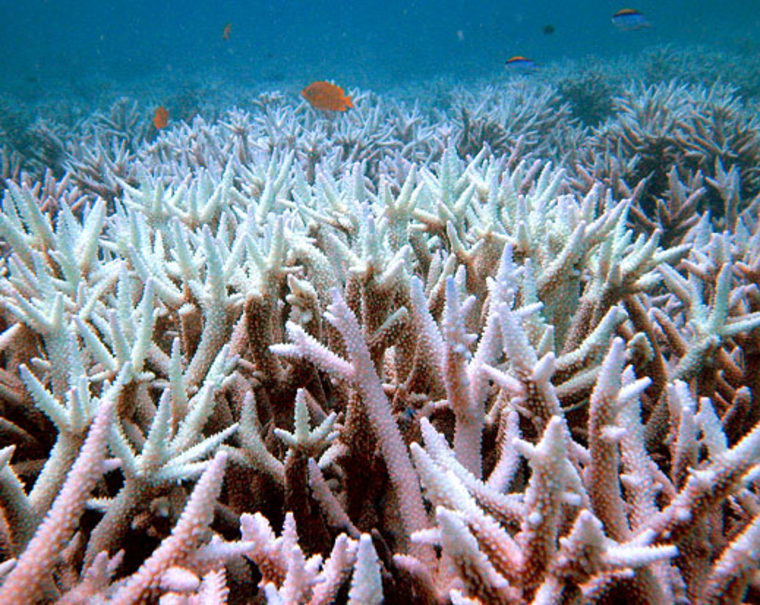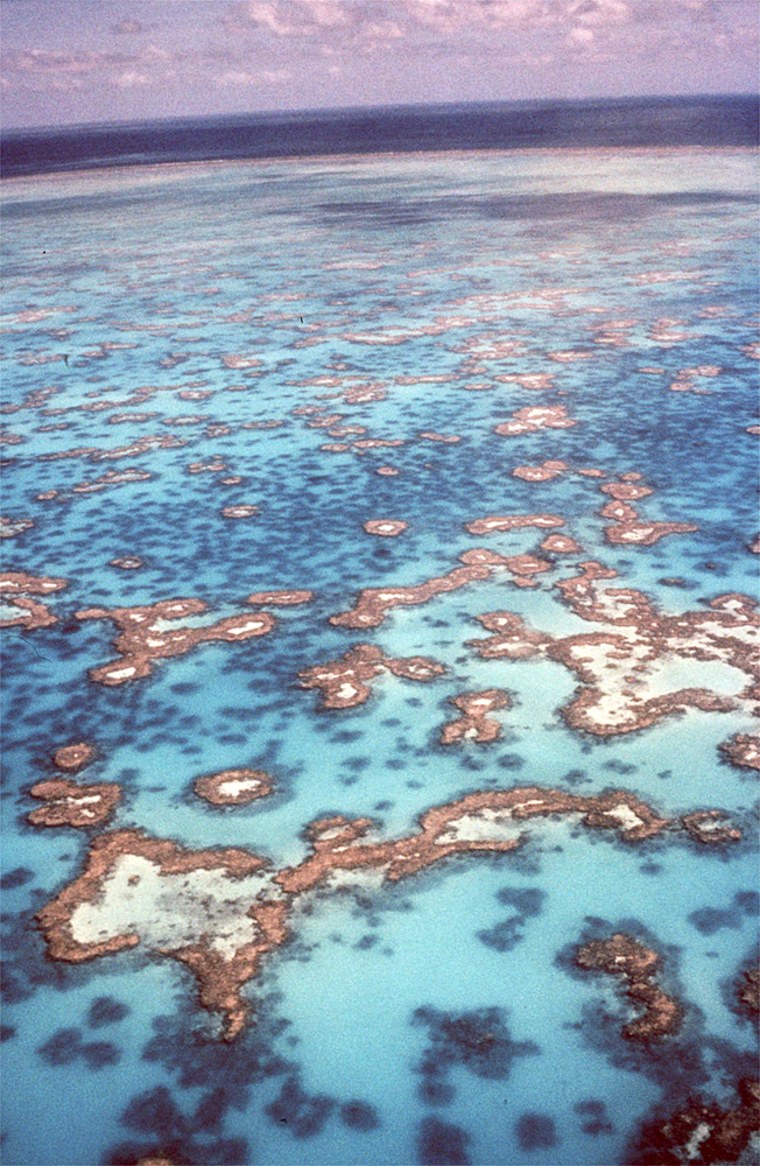Off Australia’s east coast, you will find the Blue Outback, a kaleidoscope of life that is the Great Barrier Reef, the world’s biggest structure built by living organisms. But it is under siege from climate change and warming waters that have twice bleached its spectacularly colored corals white.
“It really looked like Christmas, like someone had just come across and put snow over everything,” said Perry Jones, captain of a charter boat, who saw the mass bleachings firsthand in 1998 and 2002.
The mass bleaching in the summer of 2002 affected 60 percent to 95 percent of reefs in the marine park, according to a 2004 joint report by the World Wildlife Fund and the Queensland government. In some locations, up to 90 percent of corals were killed.
Full recovery could take decades, but that assumes no more damage, which is a foolish assumption, according to the U.N. Intergovernmental Panel on Climate Change. The panel projected in January that warming could lead to annual coral bleaching, potentially rendering the reef “functionally extinct” by 2030.
The world’s zoo under attack
The Great Barrier Reef is officially a treasure, designated by UNESCO as a World Heritage Site. It draws millions of visitors each year, making it crucial to Australia’s $6 billion tourist industry.
But an increase in water temperature as little as 2 degrees for just four weeks can bleach the corals, killing the algae that give them their breathtaking colors.
“If the reef died, I haven’t got a business,” Jones said.
Worse, if the reed died, thousands of species, exotic and not so exotic, would perish with it in the largest marine life system in the world.
Since 1980, an estimated 20 percent of the world’s coral reefs have been destroyed, and the U.N. climate change panel warns that many spectacular fish and corals could be lost as soon as 2020 if the water continues to warm.
Triple threat: warming, fishing, pollution
But warmer waters are not the only challenge. For decades, the reef waters’ fish stocks have been depleted by commercial fishing operations. And the rivers of northeastern Australia carry pollution that is swept into into the reef during tropical storms.
The Cooperative Research Center for the Great Barrier Reef World Heritage Area estimates that mud pollution has increased eightfold and nitrogen pollution 300 times since European farming practices arrived in Australia. The pollution is thought to fuel rampant populations of crown of thorns starfish, which feed off coral.
“A reef that is stressed through water pollution or overfishing is much less able to cope with climate change,” said Paul Marshall, who manages the coral bleaching and climate change response program at the reef for the Great Barrier Reef Marine Park Authority.
The Australian and Queensland governments introduced programs to protect the reef waters in 2003, but a report issued by the Queensland provincial government found that officials have failed to enforce targets for reducing pollution in the reef.
About a third of the 135,000-square-mile reef was put off-limits to fishermen in 2004. That’s only one-quarter of 1 percent of all the ocean surface, but it supports 25 percent of the world’s marine life: 400 different kinds of coral; 1,500 kinds of fish, including the black tip reef shark; and 6,000 types of shellfish.
‘Far reaching consequences’
The effects of warming go far beyond the death of the coral, because the structure itself supports an ecosystem of enormous complexity. If even one part of it goes out of whack, the implications are widespread, the reef authority says.

Already, the reef authority has observed mass kills of seabirds when unusually warm summers lead to “provisioning failure.” As warmer waters drive food fish to cooler waters, the birds have to fly farther afield to find food. Many don’t make it back home, and many of those that do find that their chicks have died of starvation.
Higher water temperatures also alter the gender ratio of turtle hatchlings — the higher the temperatures, the fewer males. And they threaten the habitat used by whales, especially humpbacks, for migration, calving and feeding.
“Climate change, in conjunction with other pressures including declining water quality and over fishing, will result in unprecedented pressure on coral reefs,” the reef authority warns. “The impacts on the reef ecosystem have far reaching consequences for the communities and the industries that depend on the Great Barrier Reef.”
Marshall, the authority’s climate change manager, said there was still time to save the Great Barrier Reef. But not much.
“How much damage occurs is in our hands, and the worst-case scenario is a very grim one indeed, but the best-case scenario is a reef that is definitely worth working very hard to save,” he said.
